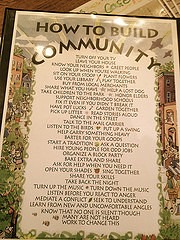A recent conversation with a small-to-medium business (SMB) included the question, “If my business is booming, then why should I keep blogging?”
Great question because blogging takes a boatload of consistent time and attention. Not only is a blogger responsible for creating and publishing genuine and authoritative content, that blogger needs to nurture a community and comment on others’ blogs, too.
I get it; but, here’s what I said to my peer, friend and colleague:
- If your blog goes dormant, you can’t walk the talk with clients.
- When you disappear longer than four weeks with no activity, people stop coming to check in and you’re forgotten.
- Prospects that want to check out your work expect to see up-to-date product. If a date on the most recent blog post is 60 days prior, then that sends erroneous messages. You may lose a lead if a blog is inactive.
- To compete, you need to stay inspired. A blog gives SMB brands an opportunity to differentiate from the competition.
- Becoming an authority is no easy task; keep the insight fresh and trendy, and the brand will benefit.
8 Tips To Get Back On Track
1. Post from the archives — there is content no one has seen in 12 months; select a favorite, add a more current opening paragraph, and voila — a fresh post!
2. Write shorter pieces. Blog posts should average about 500 words, give or take. If you’re trying to get back on track, write 350 words (you can do those in your sleep!).
3. Acknowledge your community with a list of the last 25 commenters and their blog urls. That pingback will bring peeps back to your house in droves to welcome you back.
4. Aim for one post weekly for a few weeks to get your mojo working again. Anyone who has blogged more than 12 months knows how to get back to it; just like riding a bike.
5. Remember that community you built? They’re not gone; just dormant, too. But, if you call them back with consistent posts, you’ll earn the traffic once again.
6. Think about SEO juice — what’s the number-one rule? Fresh, frequent content to boost organic attention.
7. You can’t be a one-channel wonder. Great that you’re on Facebook, but where did you really get your start? Twitter. What happened next? Blogging. Where are your clients, community, employees and prospects hanging online? A little bit of everywhere, so you need to engage equal parts Twitter, Blogging, Facebook and Google+.
8. Feeling down and out? Remember the ‘raderie your blog community inspires. There’s absolutely nothing like a good ‘old #TeamBlogJack to raise the spirits of bloggers who’ve been dormant awhile.
So, what do you say? C’mon back! You’re missed!












